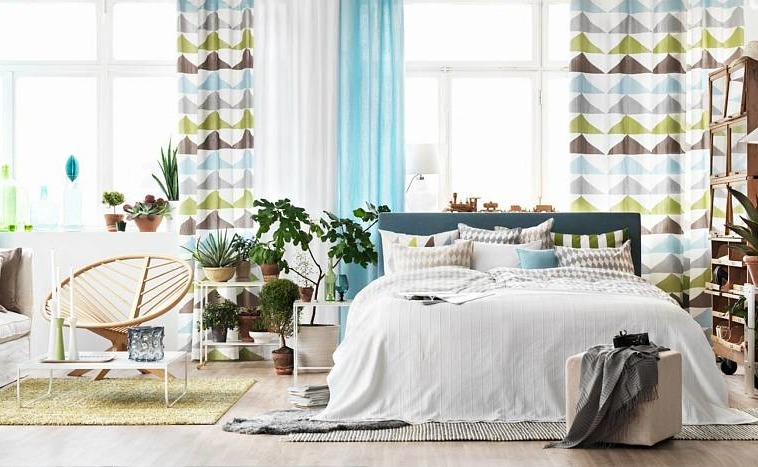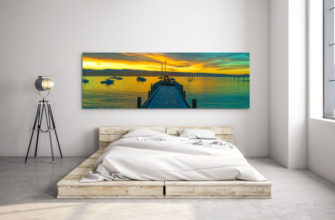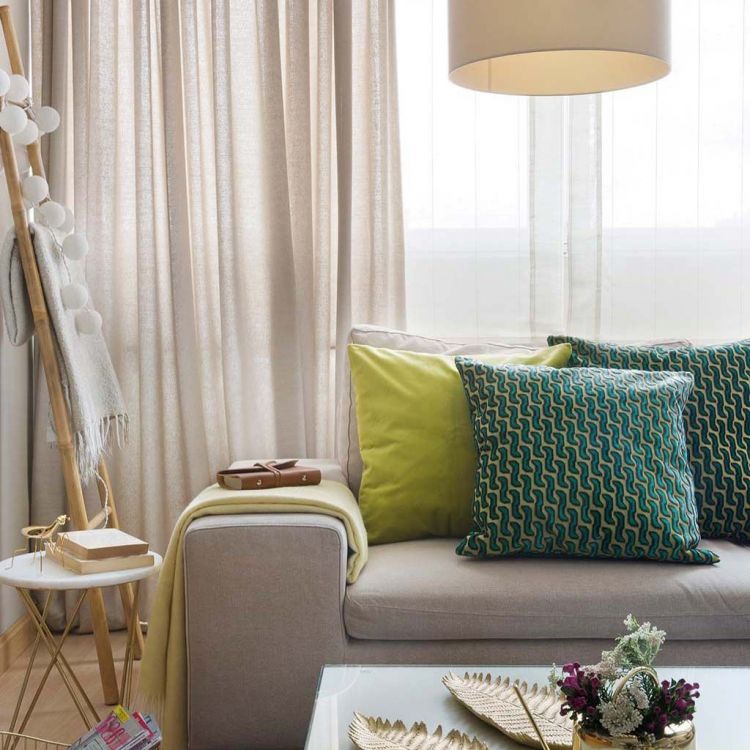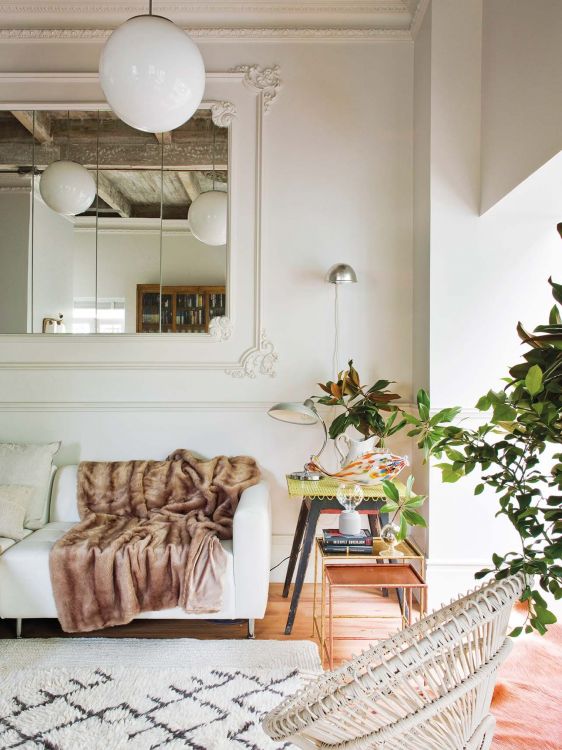Curtains in the bedroom are needed not only in terms of decor; they create a soft, comfortable environment that is conducive to relaxation. Therefore, the answer to the question of which curtains to choose in the bedroom is so important, it is clear why so much time is spent comparing fabrics, cuts, and colors. The proposed material contains useful information about the varieties of curtains and their combination with objects and colors of the interior. It will help determine which type of window decor is optimal in a particular case.

What do we expect from curtains?
In the northern countries of Europe, the decor of living rooms without curtains is familiar and even preferable. It looks beautiful in some interior styles, but it does not at all fit with our ideas about beauty and comfort, especially when it comes to the bedroom. Window textiles are appreciated not only because of their decorative, but also practical qualities.
Along the way, it solves many problems: it protects the room from prying eyes, sunlight and night city lighting, serves as a barrier to street dust and drafts. Much also depends on whether it is necessary to emphasize the window and thereby divert attention from the imperfections of the interior, or to hide both the window and the view behind it. Therefore, the material and color for the curtains are chosen with all responsibility, based not only on the color palette of the room but also on the functionality.

Fabric selection
The way the room is protected from light affects the choice of fabrics, so the window design can turn into a rather complicated composition. If a blackout system or blinds is installed on the window, the design and the number of curtain layers can be any. If the curtains will independently screen the bedroom space from external stimuli, you can not do without a model with a second dense layer.

Traditionally, both natural and synthetic, and mixed fabrics are traditionally used for window decor in the bedroom. Supporters of natural materials indicate their undoubted advantages: they are diverse in texture and color palette, environmentally friendly and hypoallergenic. The following options are popular:
Linen. It looks as natural as possible, which is appreciated in many styles, holds its shape well, is able to breathe (regulate microclimate). However, it is easy to wrinkle, and suitable for a limited number of styles.
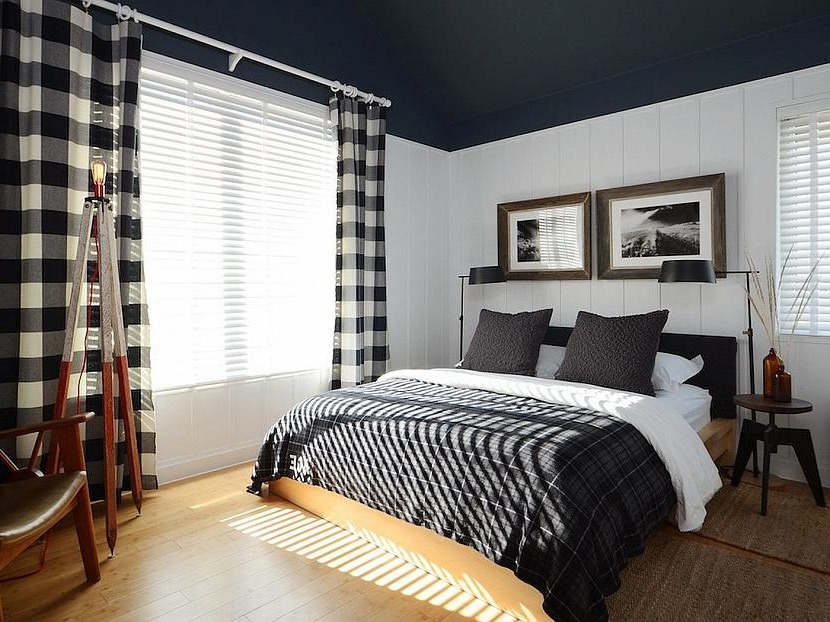
Silk. It features a luxurious look and a characteristic brilliance. The material is breathable, drapes beautifully, and does not attract dust. The disadvantages include the high price and the need for delicate care; besides, silk burns out in the sun.
Synthetic fabrics have enough flaws to be the least popular choice for bedroom decor. These include the ability to cause allergies, deform over time, and become electrified; we must not forget about poor breathability.
At the same time, synthetics have important advantages: it keeps its shape better, does not sit down during washing, reluctantly absorbs dirt and odors. The production of fabrics is being improved, and many modern synthetic materials do not cause allergies, become more pleasant to the touch, and also produce much less dust than linen or cotton.
The middle ground can be considered the average option: materials, which are mixed in different proportions of two types of fibers: natural (wool, linen, silk) and artificial (viscose, polyester). Blended fabrics are distinguished by a pleasant price/quality ratio, have a beautiful appearance, and are well-draped, practical and durable.
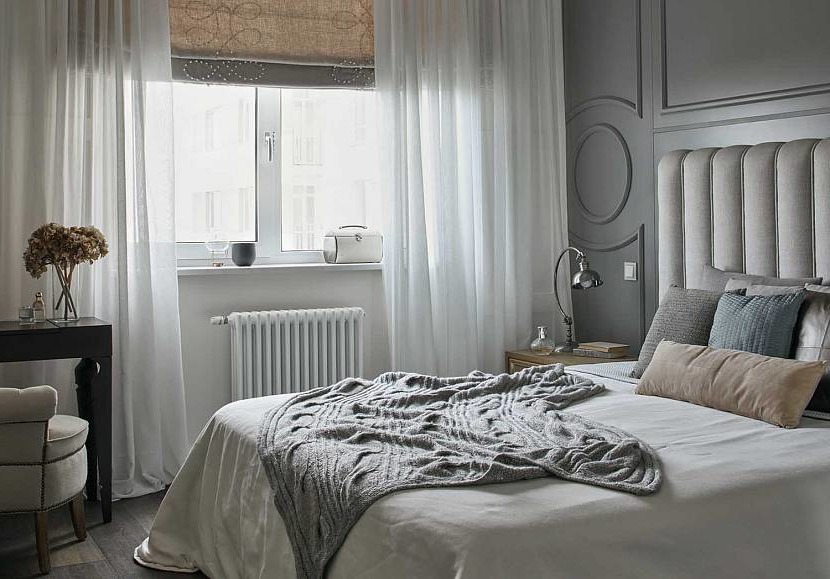
When deciding how to choose the right curtains in the bedroom, it is useful, regardless of the design of the room, to use the following recommendations.
- Eco-trends are reflected in indoor textile. If you are close to a fashion for natural life, pay attention to the curtains made of linen, silk, or cotton. Discreet monophonic, or bright patterned, they look great in a suitable environment.
- If a relaxing environment is important to you, rely on soft, pleasant to the touch textiles with a clearly visible texture (melange effect). Blend silk, linen, organic cotton, wool are suitable.
- It is worth refusing to purchase pile fabrics for the bedroom. Velvet curtains are a great dust bag.
- If the interior has a classic focus, patterned jacquard fabrics with an exquisite pattern are a good choice.
- For minimalist interiors, dense (possibly mixed) fabrics that can form careless soft folds under the influence of their own weight will become a good solution.
- For a bedroom in a romantic style (Provence, Shabby chic), curtains made of light flowing material are suitable.
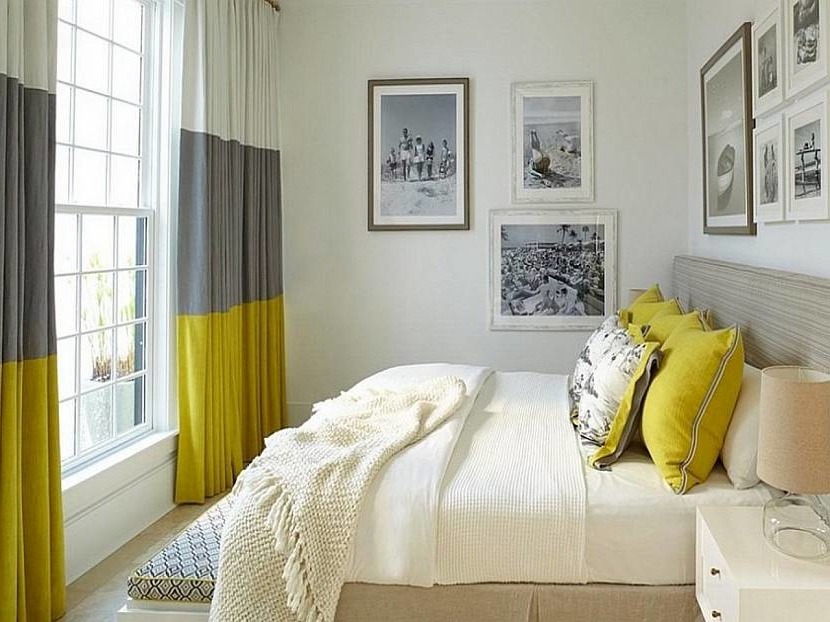
Constructions and models
In order for curtains to become a harmonious element of bedroom decor, it is necessary to build on the style of the room in the choice of design and model. According to the method of opening the design, the curtains are divided into two groups:
Sliding. A traditional option, suitable for any style. We are especially fond of the classic design, where the curtains acquire a particularly luxurious look with impressive draperies and a lambrequin. In modern styles, an alternative will be the designer find of recent years – a combination of three layers of fabric. Depending on the idea, the materials are selected in tone or contrast.
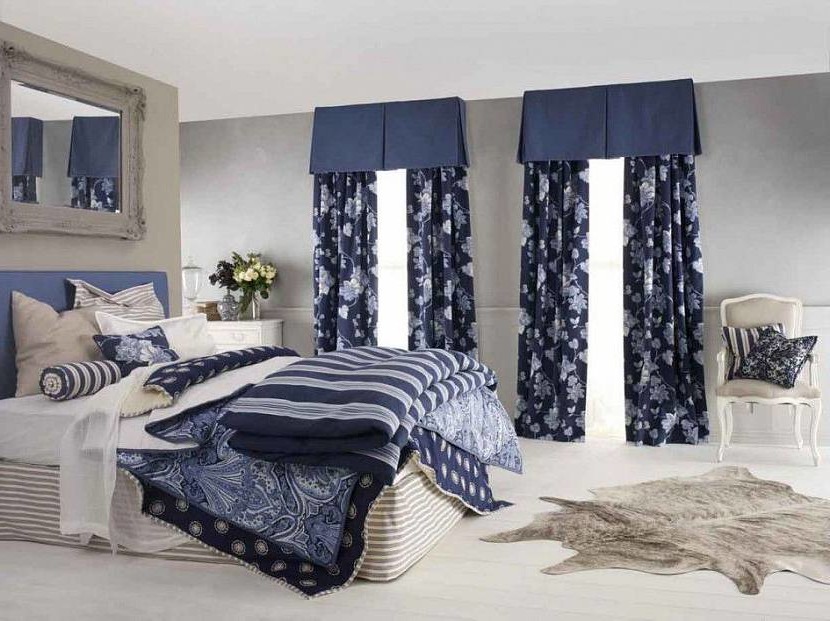
Lifting. Such, usually short, models equipped with a lifting mechanism are convenient, varied, and functional. The Roman curtain, which forms picturesque horizontal folds, is popular. In the bedroom can be installed and roll models (blinds). Fabrics can be chosen at any level of light transmission, but the length should fall 10 cm below the window sill.
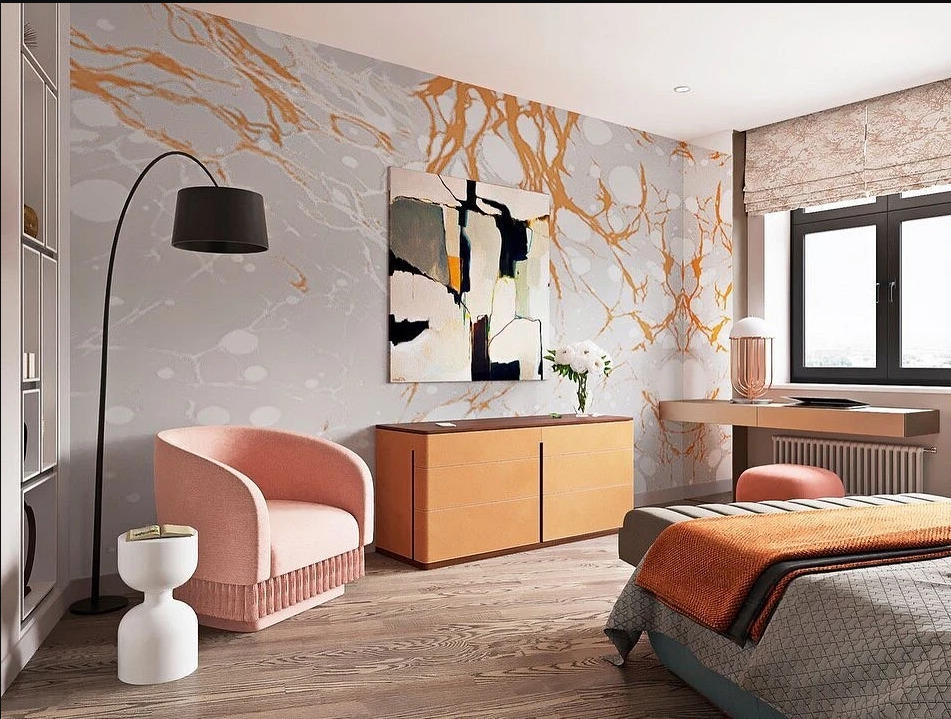
The style of the bedroom also affects the choice of model:
- Typical modern trends (loft, minimalism, Scandinavian). Functional curtains of a simple cut will do. Asceticism is not in fashion today, so the fabric can be decorated with geometric patterns, and layered decor is possible.
- Classic, neoclassical. Sliding curtains can have a complex cut, several tiers of fabrics of different density, and composition. French and Austrian curtains with their magnificent folds will fit into the interior.
- Modern styles (European, contemporary). Practicality and strict elegance are important here, so you can choose both sliding, and Roman or roller blinds. In a small bedroom, especially if there is furniture near the window opening, blinds will be a good option.
- Romantic styles. Simple cuts made of cotton would be appropriate. For a bedroom in a country-style or Provence, fabric in a cage or a vertical strip is suitable. For the interior in the style of shabby chic – delicate plain or with floral motifs.
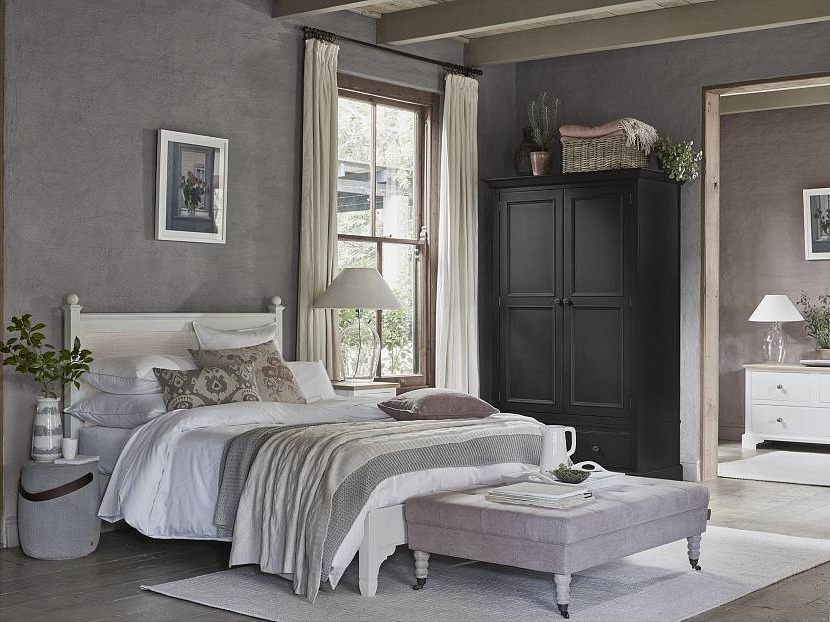
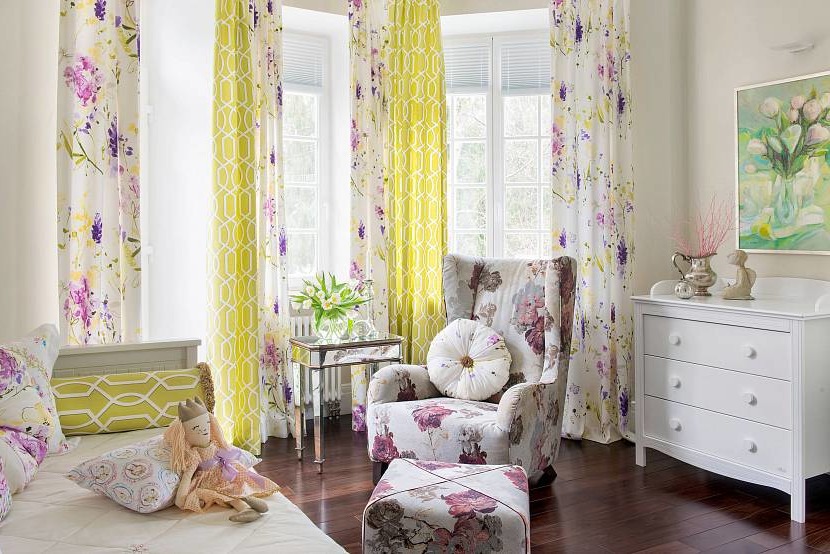
Color and decor: modern ideas and design principles
The fashion for simplifying life and a rational approach to design is reflected in the interior of the bedroom. Stylish trends in the room for sleeping and relaxing are simple forms, calm colors, and light textiles with tactile texture.
There are several ways to choose curtains in the bedroom; Designer’s advice converges only in one thing: curtains of a complex cut, with large tassels and grabs, fringe, and lambrequins are a thing of the past. The same applies to massive cornices: lightweight structures occupy their place.
The design of the window opening is inseparable from the design of the bedroom. The choice of curtains that resonate with the color and pattern of the wallpaper, carpet, fabrics of furniture upholstery will be correct. You can make a combination with the color of bed textiles, bedspreads, decorative pillows, or plaid. In this case, it is allowed to simply maintain colors and patterns, or approach the issue globally, and design the room using companion fabrics, which are often offered by manufacturers.
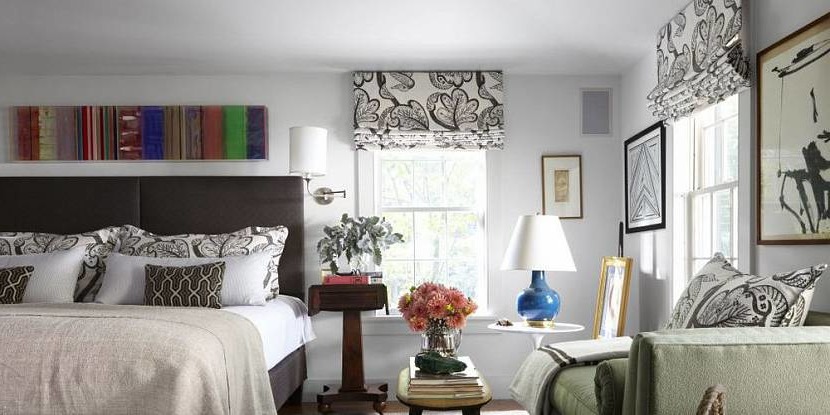
Companion fabrics mean the presence of several complementary materials. They are made in the same style and color scheme, but differ in the details of the ornament, or have some unifying element. This method eliminates the need to select shades and minimizes color matching errors to a minimum.
The design of the curtains depends on the purpose of the bedroom. The bedroom of adult family members, as a rule, is restrained in design, and the curtain fabric follows a general rule. The bedroom of a small child is made brighter and more diverse; curtains can have different shades: from pastel neutral to bright, decorated with funny drawings or ornaments. In the guest bedroom, you can give scope for imagination and make the window decor more vivid, contrasting to the setting.
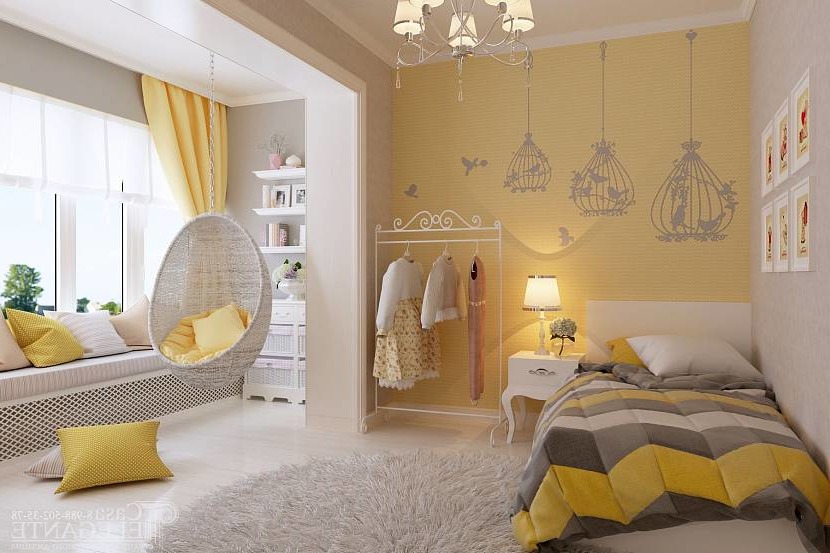
When choosing a color, it is worth considering the following design trends:
- The fabrics of muted natural shades of the earth, moss, wood, cloudy sky remain popular. They are well complemented by shades of beige, helping to make the interior warmer.
- Curtains in a neutral palette always look successful: sand, ivory, cream color. The design of the window is elegant and unobtrusive.
- Curtains should not merge with wall decoration and furniture. It is better to choose a fabric that differs from the interior by a couple of tones; the bedroom will not look faceless.
- A proven technique is the use of two-color curtains; the combination with the surrounding shades will be more interesting and deep.


Briefly about the main thing
Window decor is a familiar and practical accessory without which the interior of the bedroom looks inferior. In addition to aesthetics, curtains have other functions, so the material and color should be chosen with attention.
Both natural and artificial materials can be used for sewing curtains, but in many cases, mixed fabrics are the best choice. They combine the qualities of the original fibers, which brings together price and quality in an acceptable proportion.
The choice of curtain design depends on the style of the bedroom. Sliding curtains are more versatile and suitable for all styles. Lifting models are appropriate in modern rooms, although more decorative options (for example, French) are used in the design of a classic bedroom.
Current color selection trends emphasize beige and muted natural shades. They should be combined with the surrounding decor, but not merge with it.

